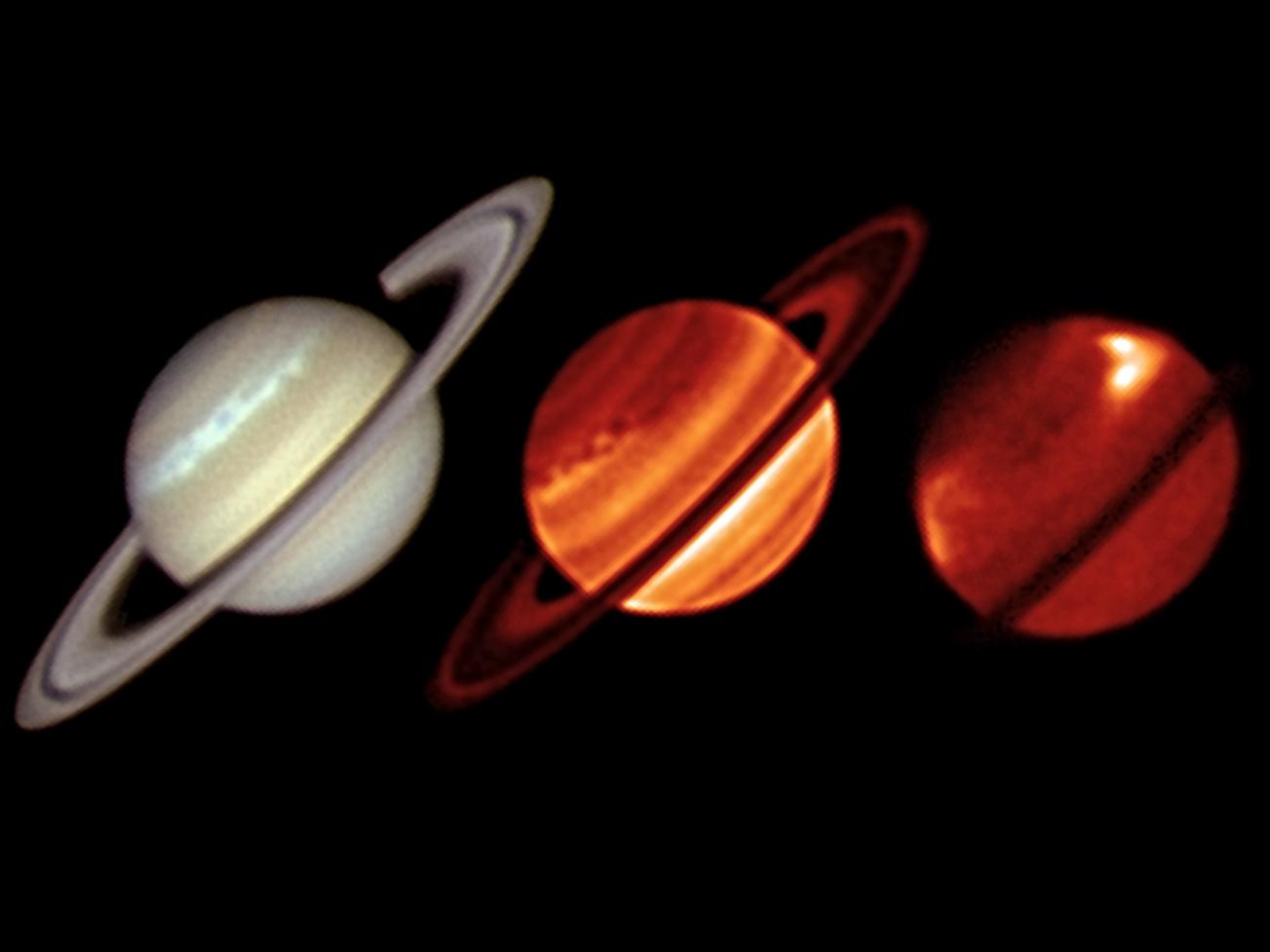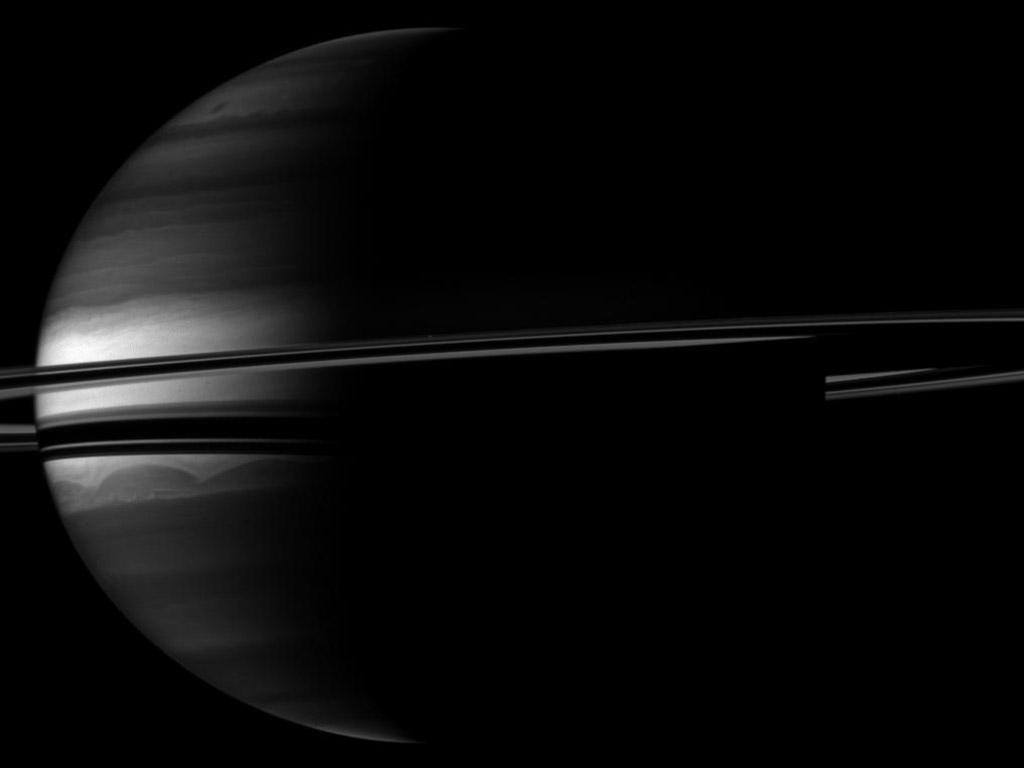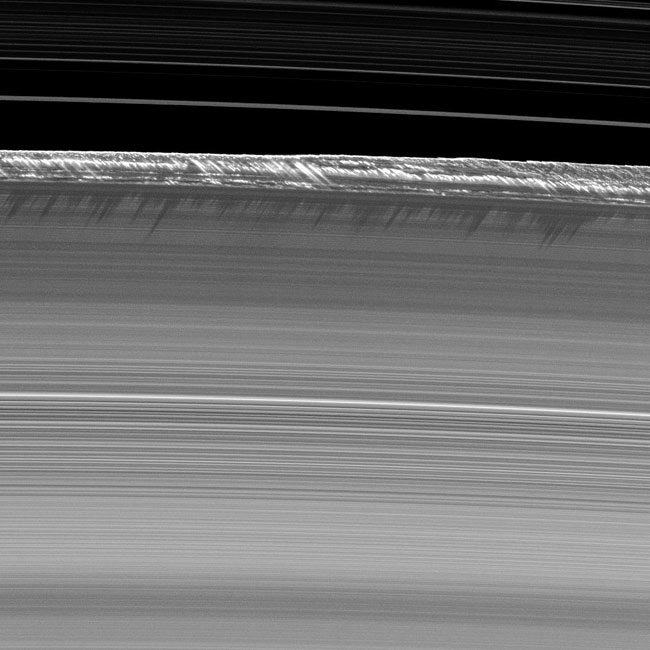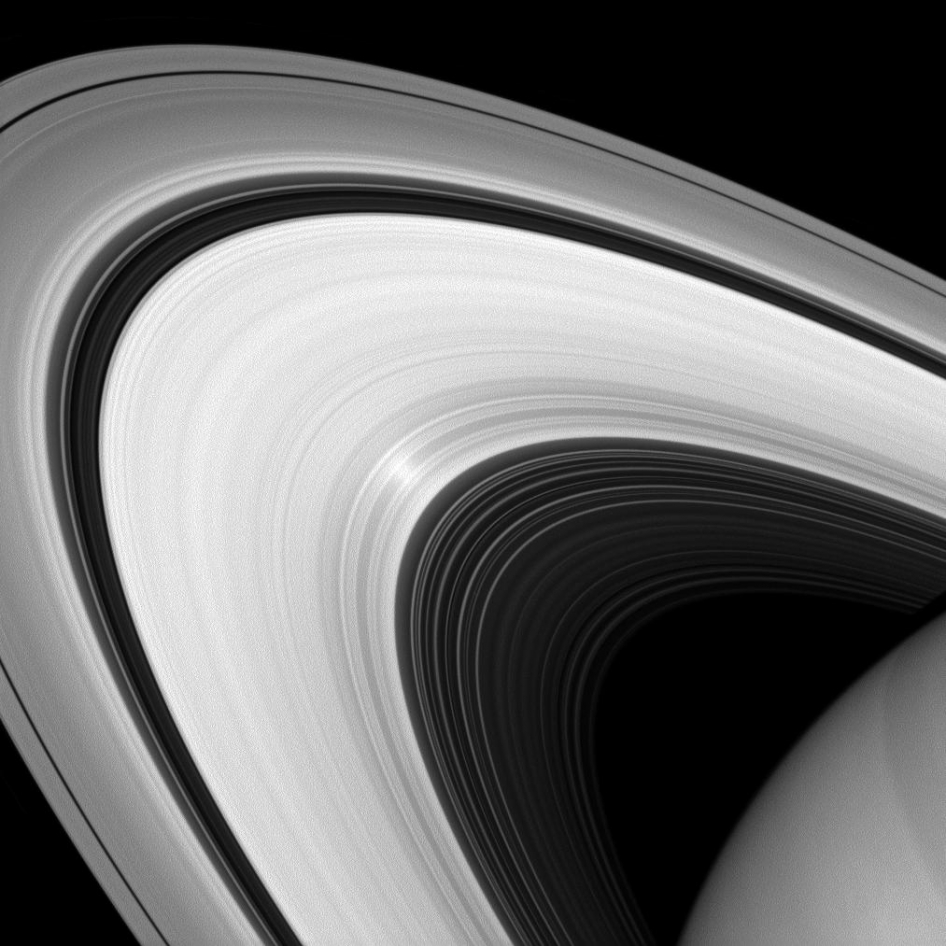Photos: Saturn's Glorious Rings Up Close
Monster Storm on Saturn
A comparison of thermal infrared images of Saturn from the European Southern Observatory's Very Large Telescope (VISIR instrument) is shown, with an amateur visible-light view from Trevor Barry (Broken Hill, Australia) obtained on Jan. 19, 2011The images were obtained on Jan. 19, 2011, during the mature phase of the northern storm. The second image is taken at a wavelength that reveals the structures in Saturn's lower atmosphere, showing the churning storm clouds and the central cooler vortex. The third image is sensitive to much higher altitudes in Saturn's normally peaceful stratosphere.
Saturn's Rings
Saturn's rings.
Saturn and Three Moons
Saturn and three moons, Tethys, Dione and Rhea, seen by a Voyager spacecraft on August 4, 1982, from a distance of 13 million miles.
Cassini View of Giant Saturn Storm
These red, orange and green clouds (false color) in Saturn's northern hemisphere indicate the tail end of a massive storm that started in December 2010. Even after visible signs of the storm started to fade, infrared measurements continued to reveal powerful effects at work in Saturn's stratosphere.
Put a Ring On It
Tuesday, December 14, 2010 Rings enrobe crescent Saturn in this Cassini spacecraft image. Clouds swirl through the atmosphere of the planet, while barely-visible Prometheus orbits between the planet's main rings and its the thin F ring. Saturn's moon Prometheus appears very small above the rings near the middle of the image.
Cassini Probe Spies Spokes in Saturn's Rings
After months of searching, the Cassini orbiter circling Saturn has finally photographed the spokes in the planet's rings.
Saturn's Shimmying Rings May Be Imitating Galaxy
Vertical structures, among the tallest seen in Saturn's main rings, rise abruptly from the edge of Saturn's B ring to cast long shadows in this image, taken by NASA's Cassini spacecraft two weeks before the planet's August 2009 equinox.
Breaking space news, the latest updates on rocket launches, skywatching events and more!
Saturn Ring Clumps and Strands
Clumpy particles in Saturn’s B-ring provide stark contrast to the delicately ordered ringlets seen in the rest of this view presented by the Cassini spacecraft. Image taken July 10, 2009.
Saturn Mosaic in Natural Light
NASA's Cassini spacecraft revealed this view of the Saturn with its main rings. The planet glows in natural color, as human eyes would see it. 36 images in three color filters combine in this mosaic, obtained by Cassini's imaging science subsystem on Oct. 10, 2013. [Read the Full Story Behind this Photo Here]
Infrared Image of Saturn's Rings
This infrared image of Saturn's rings was taken with a special filter that will only admit light polarized in one direction. The image was taken with the Cassini spacecraft wide-angle camera on Aug. 18, 2013 using a spectral filter sensitive to wavelengths of near-infrared light centered at 705 nanometers.

Space.com is the premier source of space exploration, innovation and astronomy news, chronicling (and celebrating) humanity's ongoing expansion across the final frontier. Originally founded in 1999, Space.com is, and always has been, the passion of writers and editors who are space fans and also trained journalists. Our current news team consists of Editor-in-Chief Tariq Malik; Editor Hanneke Weitering, Senior Space Writer Mike Wall; Senior Writer Meghan Bartels; Senior Writer Chelsea Gohd, Senior Writer Tereza Pultarova and Staff Writer Alexander Cox, focusing on e-commerce. Senior Producer Steve Spaleta oversees our space videos, with Diana Whitcroft as our Social Media Editor.










